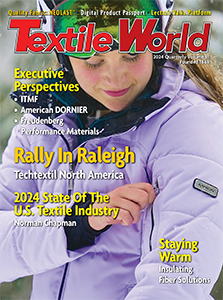BOULDER, Colo. — June 6, 2016 — Cocona Inc. has announced the public release of results from a blind university study that show wearing 37.5 technology can improve thermoregulation during exercise, which impacts performance. By reducing the increase in core temperature during exercise, similar to wearing a cooling vest circulating cold water, the added cooling from 37.5 technology increases energy efficiency and output. No other passive cooling fabric technology has been shown to increase human performance or increase the body’s ability to manage core temperature.
Physiologists Eric P. Homestead, Benjamin J. Ryan, Jesse A. Goodrich, and Professor William C. Byrnes authored the study, titled “Beneficial Effects of Cooling during Constant Power Non-steady State Cycling” at the University of Colorado at Boulder. First author Homestead presented the results at the American College of Sports Medicine’s 63rd Annual Meeting in Boston yesterday.
“Now that the study is public we’re excited to be able to talk about the results,” said Dr. Gregory Haggquist, Founder/CTO of Cocona and inventor of patented 37.5 technology. “When we see data that shows you can improve an athlete’s performance by 26 percent at their lactate threshold, it’s pretty remarkable. To get that kind of increase in efficiency just by changing your shirt fabric is unprecedented.”
This study scientifically shows that 37.5 technology:
- Extends an athlete’s performance at their lactate threshold;
- Lowers core temperature during exercise;
- Increases efficiency so an athlete uses less energy to do the same amount of work;
- Decreases the rate of core temperature build up.
“We know the results of this study will be of great interest to athletes, trainers, coaches, soldiers and anyone looking to increase their performance by just changing what they wear,” said Jeff Bowman, CEO of Cocona.
Why Core Temperature Is Important
Managing core temperature is a key factor in determining performance and efficiency. It is critical to maximize the body’s built-in cooling mechanisms (evaporation of sweat) to help reduce the buildup of core temperature. 37.5 works to keep the core body temperature lower in athletes working at their lactate threshold, which means that when wearing 37.5 apparel, athletes can go longer at the same level of output.
Study Protocol
The study used three different cases to determine effects of cooling on physiological indicators for human subjects. The cases were a typical wicking t-shirt available from the major athletic brands, an otherwise identical 37.5 t-shirt, and an ice vest and sleeves. The two shirts were blinded to both the investigators and the participants. Each case delivered a different level of cooling to athletes that were requested to maintain an exercise intensity on a stationary bicycle that resulted in an increasing heat stress. The athletes were tested for a wide range of physiological parameters before, during and after the requested activity. Core temperature, skin temperature, sweat rate, oxygen intake, carbon dioxide output, and blood levels were closely monitored and measured.
Posted June 6, 2016
Source: Cocona




